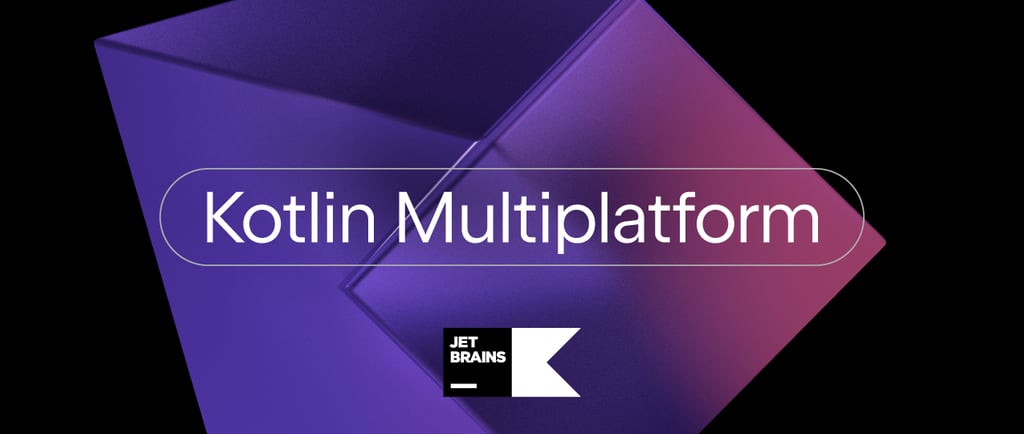Kotlin Multiplataforma x Flutter: A Cross Platform App World Battle
Flutter vs Kotlin Multiplatform: A Comprehensive Comparison of Cross-Platform Mobile Development Solutions for Efficiency, Flexibility, and Performance
TECHCAREERMOBILE
Laura Oliveira
10/15/20244 min read


Introduction
Mobile app development has undergone a remarkable transformation since the early days of smartphones. Initially, developing apps meant creating separate native applications for each platform—iOS and Android. This approach, while effective, led to increased development time and costs, as developers had to write and maintain different codebases for each operating system.
As the mobile landscape evolved, the demand for more efficient development processes grew. This led to the rise of cross-platform frameworks, which promised to streamline the development process by allowing developers to write code once and deploy it across multiple platforms. These frameworks aimed to reduce duplication of effort and speed up time-to-market, offering significant advantages in terms of both cost and efficiency.
The Rise of Cross-Platform Development
Early Cross-Platform Tools: Early cross-platform solutions, such as Xamarin and PhoneGap, provided basic functionality to help developers create applications that worked across different platforms. However, these tools often struggled with performance and user experience issues, as they typically relied on web technologies or required a lot of bridging code to interact with native features.
Flutter: Launched by Google in 2017, Flutter represents a significant advancement in cross-platform development. It introduced a modern UI toolkit that uses a single codebase to create natively compiled applications for mobile, web, and desktop from a single codebase. Flutter’s unique architecture, which includes a highly customizable widget-based system and its own rendering engine, allows for a rich and consistent user experience across platforms.
Kotlin Multiplatform (KMP): Kotlin Multiplatform, introduced by JetBrains, brings a different approach to cross-platform development. Rather than providing a full-fledged framework for UI development, KMP focuses on enabling code sharing across platforms while allowing developers to use native UI frameworks. This approach offers a flexible way to share business logic, data handling, and other core functionality between iOS and Android apps while still leveraging platform-specific UI components.
Flutter vs. Kotlin Multiplatform: Key Differences and Advantages
1. Cross-Platform Coverage and Approach
Flutter
- Unified Codebase: Flutter enables developers to write a single codebase for both iOS and Android, including the UI and business logic. This approach simplifies development and ensures a consistent look and feel across platforms.
- Custom UI Components: Flutter’s widget-based architecture allows for extensive customization and control over the UI, providing a uniform experience across platforms without relying on native components.
Kotlin Multiplatform
- Code Sharing Focus: KMP allows for code sharing primarily at the business logic and data handling levels. It does not enforce a unified UI framework, which means developers can use platform-specific UI components for a more native look and feel.
- Flexible Integration: KMP integrates with existing native projects, enabling gradual adoption and allowing teams to maintain separate UIs while sharing core logic across platforms.
2. Performance and Resource Utilization
Flutter
- Rendering Engine: Flutter uses its own rendering engine (Skia) to draw widgets directly on the screen, which can result in high performance and smooth animations. However, this approach can lead to larger app sizes and some performance overhead compared to native code.
- Development Speed: The "hot reload" feature accelerates the development process by allowing developers to see changes in real-time without restarting the app, improving productivity.
Kotlin Multiplatform
- Native Performance: Since KMP focuses on sharing only the non-UI parts of the application, it leverages native UI components on both iOS and Android, which can lead to better performance for the UI and a more native user experience.
- Granular Control: KMP allows developers to optimize performance at the native level by writing performance-critical code in Kotlin and using native APIs directly.
3. Community Support and Ecosystem
Flutter
- Robust Ecosystem: Flutter benefits from strong support from Google and a growing developer community. The ecosystem includes a wide range of packages, plugins, and comprehensive documentation, which facilitates development and troubleshooting.
- Regular Updates: Google frequently updates Flutter with new features and improvements, contributing to its rapid evolution and increasing adoption.
Kotlin Multiplatform
- Growing Support: KMP is backed by JetBrains and has gained traction in the developer community, but its ecosystem is still evolving compared to Flutter. While there is robust support for core functionality, the number of third-party libraries and tools is still growing.
- Flexibility: KMP’s approach allows developers to leverage existing native libraries and frameworks, providing flexibility to integrate with various tools and technologies.
Conclusion
Both Flutter and Kotlin Multiplatform have distinct strengths, but for projects that prioritize both efficiency and flexibility, Kotlin Multiplatform (KMP) emerges as a superior choice. While Flutter excels in providing a unified UI experience across platforms with its rich set of widgets and tools, Kotlin Multiplatform stands out by enabling the sharing of core business logic while preserving native UI development. This approach not only enhances performance but also ensures that platform-specific nuances are effectively addressed.
Kotlin Multiplatform’s ability to integrate seamlessly with existing native codebases and leverage platform-specific features while maintaining a shared codebase for business logic makes it particularly advantageous for teams aiming to optimize both performance and user experience. As the demand for highly performant and maintainable applications continues to grow, KMP offers a compelling solution that aligns well with these evolving needs.
In conclusion, if you seek a balance between cross-platform functionality and native performance, Kotlin Multiplatform is likely the better option for your project. Its flexibility and efficiency in managing core logic while tailoring the user interface to each platform's strengths make it an excellent choice for modern app development.
Laura Oliveira
Mobile Developer and Content Creator
Fascinated by technology since she was a teenager, she loves solving problems and learning new things.
I currently work bringing ideas to life for Android apps.
I have +2 million people impacted through the production of digital content.


2M+
3
Years Creating Content
Content Reach
